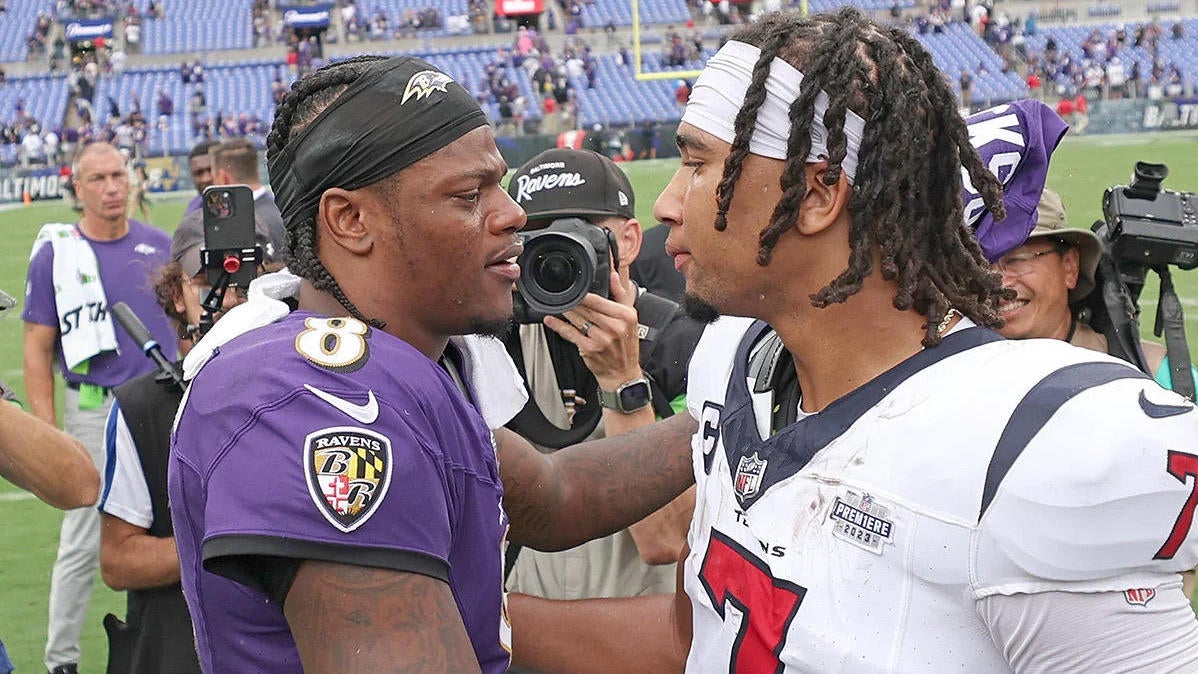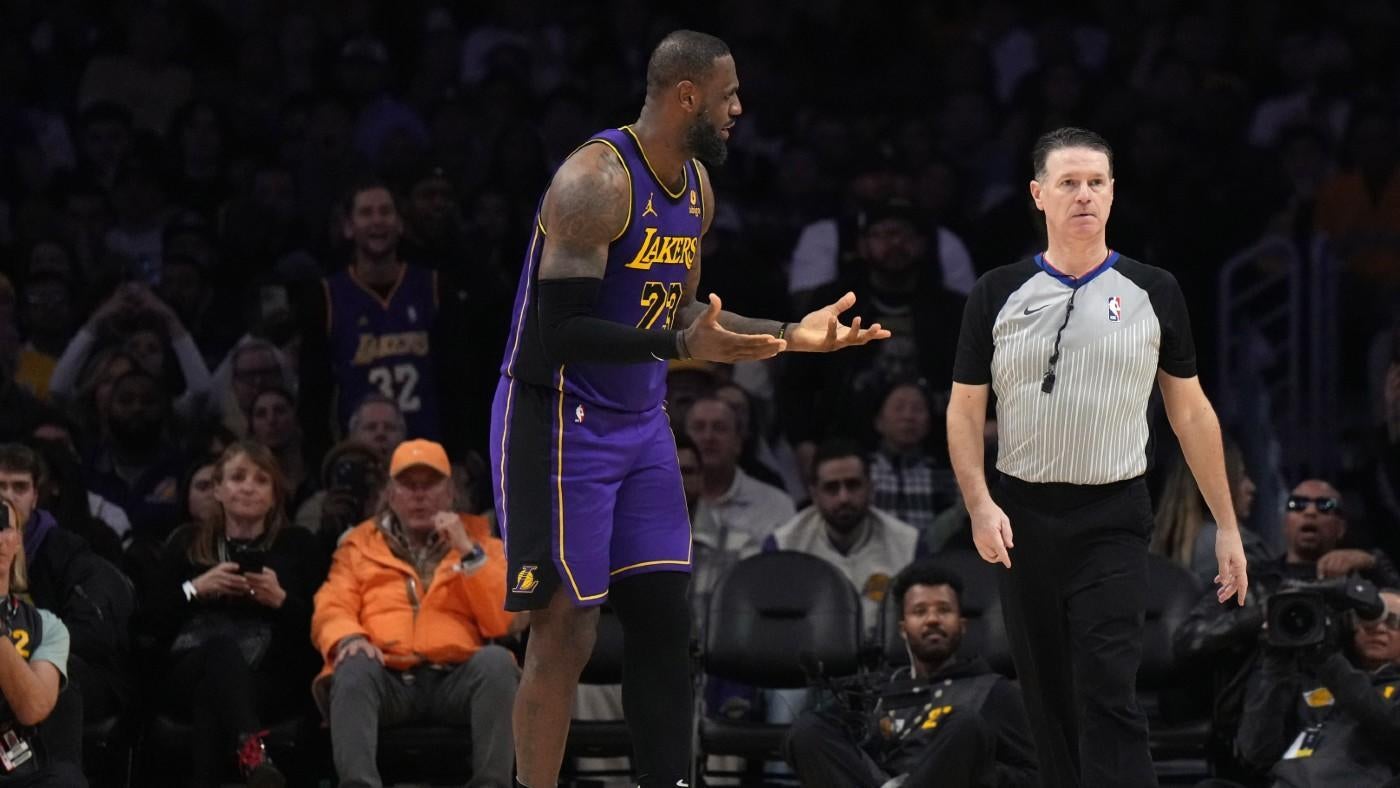Ravens vs. Texans how to watch: Time, TV, live stream, key matchups, prediction for AFC divisional round game
Written by CBS SPORTS ALL RIGHTS RESERVED on January 20, 2024


It’s hard to believe, but we’re already into the divisional round of the NFL playoffs. The first of four games this weekend will see the No. 1 seed in the AFC, the Baltimore Ravens, play host to the No. 4 seed and AFC South champion Houston Texans.
Baltimore secured home-field advantage throughout the playoffs all the way back in Week 17, then gave most of the starters the regular-season finale off and got to watch the wild-card games at home, having earned a first-round bye. The Texans came into their game against the Browns as home underdogs, then quickly blew Cleveland off the field and claimed their first playoff victory since 2019.
Now, these two teams get to square off — in a rematch of their season opener — with a trip to the conference championship on the line. Which of them will advance to the AFC title game? We’ll find out soon enough.
Before we break down the matchup, here’s a look at how you can watch the game.
How to watch
Date: Saturday, Jan. 20 | Time: 4:30 p.m. ET
Location: M&T Bank Stadium (Baltimore)
TV: ABC/ESPN | Stream on fubo (try for free)
Follow: CBS Sports App
Odds: Ravens -9.5, O/U 43.5 ( via Sportsline consensus odds)
When the Texans have the ball
When these teams played all the way back in Week 1, the Texans surely did not look like the type of team that would be vying for an appearance in the conference championship game. They scored only nine points against Baltimore’s defense; C.J. Stroud averaged a mere 5.5 yards per attempt, Dameon Pierce and Devin Singletary combined for just 53 yards on 18 carries (with Pierce leading the backfield), and Tank Dell was barely a part of the offensive picture. Just about the only thing that happened on offense that foreshadowed any of what was to come was that Nico Collins turned his 11 targets into 6 catches for 80 yards.
We all know what happened next. Stroud had one of the best rookie seasons in NFL history, leading the league in both passing yards per game and touchdown-to-interception ratio while checking in sixth in both passer rating and TruMedia’s version of EPA per dropback. Singletary completely took over the backfield from Pierce. Dell became one of the most explosive receivers in all of football before a season-ending injury. And Collins emerged as a true No. 1 receiver, racking up 80 grabs (more than he had in his first two NFL seasons combined) for 1,297 yards (same) and 8 touchdowns (also) in his 15 games played.
Offensive coordinator Bobby Slowik put Stroud and Co. in position to succeed with his offense that was heavy on play action (24.5% of dropbacks, seventh in the NFL among regular starters, per TruMedia) and route concepts designed to attack the middle of the field. On between-the-numbers throws this season, Stroud went 190 of 251 for 2,369 yards, 11 touchdowns, and 4 interceptions. He was fourth in the NFL in EPA/dropback and second in explosive-play rate (15.5%) on those passes.
This weekend against Baltimore, Stroud will face the league’s No. 1 pass defense, and will do so without Dell, as well as Noah Brown, who went on injured reserve earlier this week. The Ravens finished the season fourth in EPA/dropback against middle-of-the-field throws, and fifth against play action. They allowed just one passing touchdown all season on a throw following a run fake — a 65-yard catch-and-run by Jaguars wideout Jamal Agnew on a busted coverage. Against under-center play action passes like the Texans favor, opponents went just 27 of 47 for 345 yards, the aforementioned touchdown, and two interceptions, with Baltimore again finishing fifth in opponent’s EPA/dropback.
Mike Macdonald’s defense can shape-shift from week to week depending on what the opposing team likes to do and where it looks to attack. We saw this throughout the year. They used five different coverages for at least 10% of the snaps against the Texans back in Week 1, clearly aiming to confuse Stroud so that he didn’t know what to expect — and it worked. Stroud of course became better at dealing with nearly every type of coverage throughout the year, but we should expect Macdonald to keep him guessing throughout the game once again.
At 6-4, 215 pounds, Collins presents a size-and-strength mismatch for most cornerbacks. But Marlon Humphrey (6-0, 201) and Brandon Stephens (6-1, 215) each have good size for the position, and with both Dell and Brown out, the Ravens can be more intentional about rolling coverage help his way. They don’t have to be quite as worried about Robert Woods, John Metchie III, or Xavier Hutchinson.
Crucial here will be Slowik’s ability to scheme up quick passes that don’t afford the Ravens a chance to get pressure on Stroud in the pocket (Baltimore was eighth in pressure rate during the regular season), but still push the ball far enough down the field that the Ravens can’t just condense everything and make the Texans play small ball and put together 12-play drives to score. The Ravens guard every position and every area of the field incredibly well, but interestingly ranked just 17th in EPA/dropback on passes out of 12 personnel (1 running back, 2 tight ends). The Texans only had 57 12-personnel dropbacks all season, but Stroud did go 4 of 5 for 44 yards and a touchdown to Nico Collins out of that formation last week, and Brevin Jordan’s impressive 76-yard touchdown against Cleveland could get him on the field more often in this matchup.
Throughout the regular season, the Texans were fairly run-heavy relative to their expected dropback rate. That changed against Cleveland last week, as Slowik opened things up and let Stroud attack downfield early and often (including on the first snap of the game). The Ravens were not quite as good against the run (seventh in FTN’s DVOA) as they were against the pass (first), though they were still a strong run defense. Singletary has mostly run well in recent weeks, clearing 4.5 yards per carry in six of his last seven games, including against the Browns a week ago. If the Ravens can bottle him up and make the Texans one-dimensional, it will be all that much harder for Stroud to beat them through the air. It might just be asking too much — even of a quarterback who has been about as good as could possibly be expected during his rookie season.
When the Ravens have the ball
We didn’t know much about what to expect from the Ravens offense the last time these two teams met. And really, we didn’t know much about what to expect by the end of the game, either.
J.K. Dobbins tore his Achilles early in the second half, Mark Andrews sat out with an injury, and Baltimore seemed content to run the ball up the middle and have Jackson pepper short, quick passes to rookie wideout Zay Flowers, then count on Flowers to create yards after the catch. Flowers hauled in 9 passes for 78 yards on his 10 targets, and the entire rest of the team caught 8 of 12 passes for 91 yards, with nearly a third of them coming on one deep pass to Odell Beckham. There were very few signs of what the offense would become through the rest of the season, wherein we saw a much more spread out, considerably more diverse attack than the one the Ravens employed under former offensive coordinator Greg Roman, who was replaced last offseason by Todd Monken.
Monken married the passing concepts he’s used throughout his career with the shotgun-heavy run game based around Jackson, and even with Dobbins out for the year and explosive rookie Keaton Mitchell limited to just a few games, things mostly worked quite well with Gus Edwards and Justice Hill splitting the backfield and leading the way at different times depending on opponent and game situation.
Jackson is the one who makes everything work in the run game no matter how it’s defended, because of the way he can change the math. He figures to do the same on Saturday, especially against a team that so infrequently faced running quarterbacks this year. The Texans saw opposing quarterbacks take on on designed runs only 14 times all season, according to TruMedia. That’s the ninth-fewest such runs against in the league. Including scrambles but excluding sneaks, they faced just 26 quarterback runs, allowing 144 yards and four touchdowns. With as good as their regular run defense was: first in yards before contact allowed per carry (0.83), fourth in stops at or behind the line of scrimmage (22.9% of opponent runs), and fourth in explosive run rate (5.6%), the threat of Jackson is an enormous factor.
That’s especially true because the Texans were so poor at defending play-action passes. They checked in 31st in opponent’s EPA/dropback, per TruMedia, and no team allowed more yards (536) on play-action deep shots. Lamar finished the season fourth in play-action EPA/dropback, completing 98 of 133 passes for 1,328 yards, 9 touchdowns, and 2 interceptions. Teams just generally threw the ball deep against the Texans quite often, targeting receivers 20-or-more yards downfield on 14.9% of pass attempts — the third-highest rate in the league. They were quite successful with those throws, as well, as the Texans ranked just 27th in EPA/dropback against deep passes. They’ll need to be on the lookout for Flowers and Beckham, specifically, deep down the field.
It will be interesting to see whether cornerback Derek Stingley Jr. shadows Flowers this week, given his outsized role compared with the team’s other receivers. Stingley played on the left side almost exclusively throughout the regular season, taking just four snaps at right cornerback all year. But then he shadowed Amari Cooper last week against Cleveland, and did so with great success. Flowers is a different kind of player than Cooper, and his speed and shiftiness can pose different types of problems, but Stingley is the team’s best cover man and Steven Nelson might prove better able to match up witch Beckham and/or Rashod Bateman and/or Nelson Agholor than he is with the speedy rookie.
Baltimore could also get Andrews back for this game, what with him getting in full practice sessions this season. He figures to not quite have his regular role given how long he has been out and how well Isaiah Likely played in his absence, but another threat over the middle and up the seam could pose problems for Houston’s defense — especially the linebackers, who are better against the run than they are in coverage.
Prediction
Baltimore won the first matchup between these teams rather handily, and while the Texans are a lot better now than they were then, the Ravens still have advantages on both sides of the ball and are healthy, rested, and playing at home. Houston has an incredibly bright future, but it’s not quite enough to compete with the Ravens’ present.
Score: Ravens 26-17
The post Ravens vs. Texans how to watch: Time, TV, live stream, key matchups, prediction for AFC divisional round game first appeared on CBS Sports.







